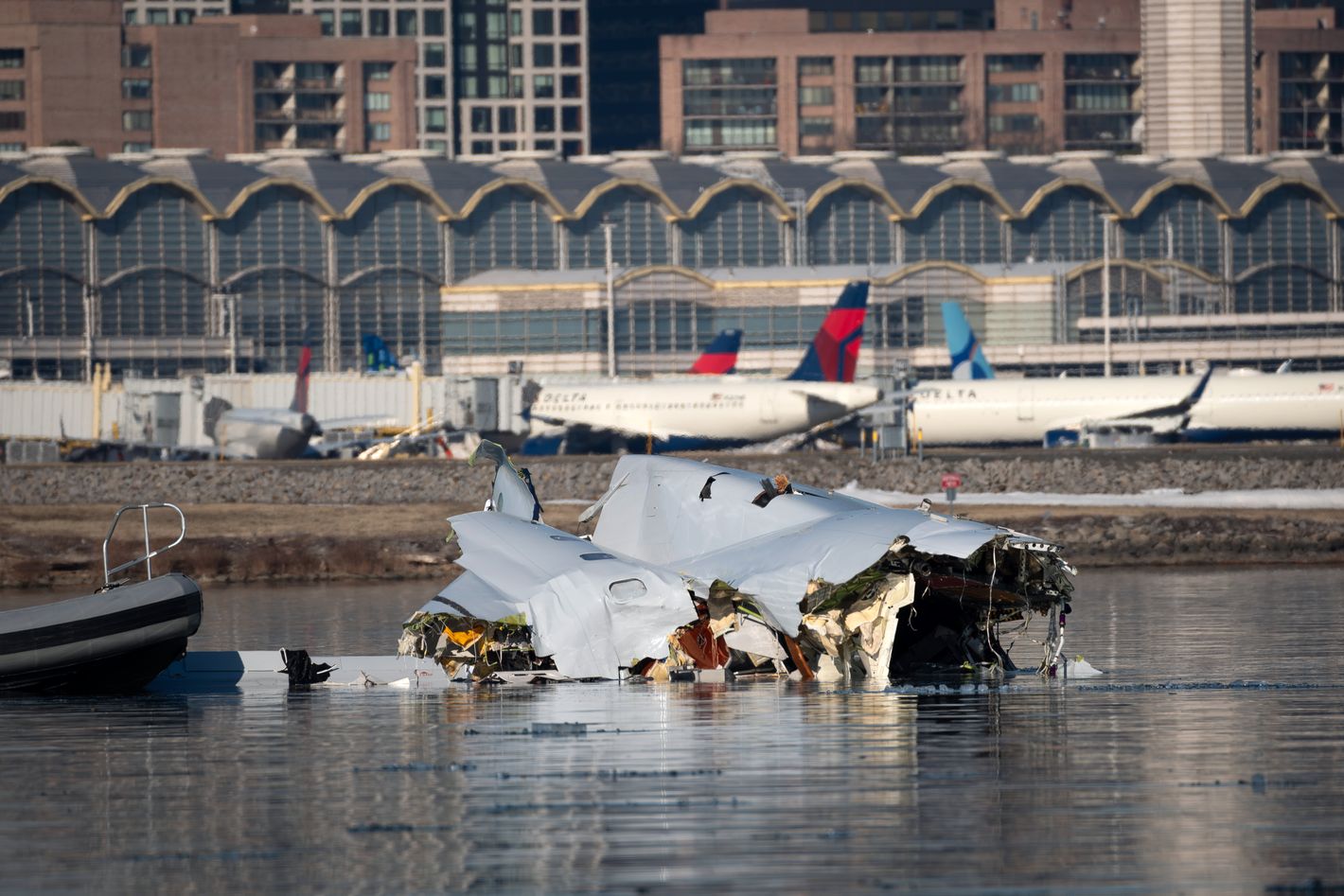Photo: Petty Officer 1st Class Brandon Giles/U.S. Coast Guard/Getty Images
When air accidents happen, it’s important not to rush to judgement. Accurately determining the cause requires time and meticulous attention to detail, and though the process is laborious it’s worth it, because accurately understanding what went wrong is the only way to prevent it from happening again.
That being said, in the wake of a crash there are certain facts that quickly become evident, and there’s no benefit to be gained in imagining ambiguity where none exists.
In the case of the tragic mid-air collision that took place in Washington, D.C. on Wednesday, there really is no great mystery as to which aircraft was at fault. It was quite clearly the Army Black Hawk helicopter that was not where it was supposed to be. While it may be the case that the tower was not properly staffed, or that the airport’s resources are chronically overtaxed, but neither of these things played a role in the crash that took the lives of 67 passengers and crew.
Likewise, it was not the pilots of the inbound Canadair Regional Jet operated by American Airlines who did anything wrong. The plane was inbound to Ronald Reagan National Airport’s runway 1 from the south, a route that took it directly over the Potomac River, when it accepted a request from the control tower to instead curve around to the right and land on a different runway, 33. Depending on a pilot’s frame of mind, this change could be seen either as exciting or scary: runway 33 is short, so pilots must control their speed carefully in order to come to a stop in time. The challenge would have been increased by the evening’s gusty wind conditions.
“Some pilots flatly refuse to do it, because it is a more challenging approach to quite a short runway,” says a CRJ pilot who frequently flies into Reagan, adding that he himself enjoys the opportunity to employ hands-on skill: “With a good headwind it’s fine. It is kind of a fun approach, doing some visual ‘pilot stuff.’”
After curving around to the right, Flight 5342 swung back around to the left and was perfectly lined up for runway 33 as it descended through 300 feet over the middle of the Potomac. The flight crew had performed their mission flawlessly. Their one failure was to miss spotting the helicopter approaching at high speed from their right, but looking out for a low-flying helicopter wasn’t on their to-do list, even after they were alerted to its presence by air traffic control. “At short final for a short runway, at night, with gusty winds, the odds of seeing the helicopter wouldn’t be great,” the CRJ pilot says. “You would be pretty focused on landing the plane, knowing of the helicopter generally and trusting the system to keep you clear.”
The controller handling the aircraft in the Reagan tower likewise didn’t do anything wrong. He was keeping track of the Black Hawk as it flew south along the Potomac through a narrow corridor called Route 4 that passed well under the approach path for runway 33. Seeing that the plane and the helicopter were flying towards each other in opposite directions, the controller called the helicopter on the radio and asked if it had the plane in sight. The pilot replied in the affirmative and asked for “visual separation,” meaning that they would take responsibility for staying clear of the other aircraft. The tower granted it: “Visual separation approved.”
That means that at the moment of collision, the Black Hawk pilot had accepted responsibility for what was about to happen. Unless some dramatic and frankly hard-to-imagine new information becomes available, there is little ambiguity as to who bears responsibility for the collision.
Which is not to say that there is no mystery at all. It remains unknown at this point how and why the pilot wound off course, 100 feet above the maximum altitude they were supposed to be at and 1,000 feet too close to the approach end of runway 33.
There has been significant speculation around the possibility that, when the Black Hawk pilot said that he had the CRJ in sight, what he was actually referring to was another aircraft, and that they never did have a good visual on AA5342 before hitting it. Or perhaps the pilot had become disoriented. Or something else was going on. The practical application of psychology to air accident investigations is called “human factors,” and it’s one of the trickiest aspects of the field. It can be impossible to know what’s going on between a person’s ears, especially after they’re dead. Often the best that a crash investigator can hope for is to find the Cockpit Voice Recorder and hear what a pilot is saying in their final moments.
On Thursday, Defense Secretary Pete Hegseth told Fox News “We… don’t yet have the black box from the Blackhawk, when we do we’ll get a sense of the internal communications.”
That, in turn, could provide a sense of which crewmember was at the controls and why they did what they did. Or it might leave the door open to a mystery that will never be solved.

